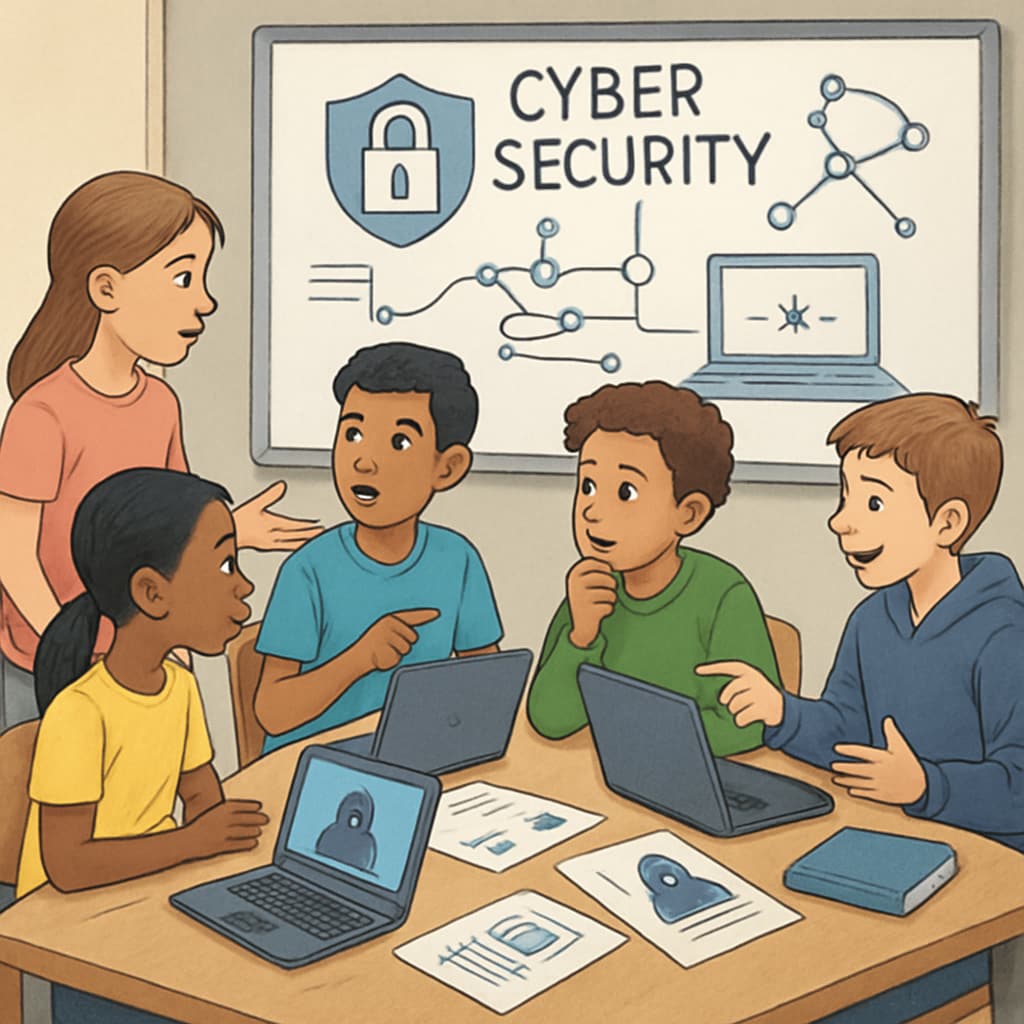The intersection of cybersecurity, data science, and career choices has become a critical area of focus in K12 education. In today’s digital landscape, these fields are not just technical skills but foundational competencies that shape how students interact with technology and the future workforce. Early exposure to these disciplines can equip students with valuable skills and open doors to lucrative careers. But how do these paths differ, and what do they offer to young learners? Let’s explore the future of these fields and their impact on education and career development.
The Growing Importance of Cybersecurity in Education
Cybersecurity has emerged as one of the fastest-growing fields globally, with increasing demand for skilled professionals. As cyber threats become more sophisticated, the need to protect sensitive data, systems, and privacy has never been greater. For K12 students, introducing cybersecurity concepts early provides more than just technical knowledge; it fosters critical thinking, problem-solving, and ethical awareness.
For example, students can learn about identifying phishing scams, safeguarding personal data, and mitigating online risks—essential skills for navigating the digital age. Additionally, programs like Cybersecurity Awareness Training are becoming common in schools, ensuring that students understand the importance of digital safety.

From a career perspective, cybersecurity offers diverse opportunities, ranging from ethical hacking and security analysis to roles in government agencies and multinational corporations. The Bureau of Labor Statistics predicts a 35% growth in jobs for information security analysts by 2031, making it an attractive option for students aiming for a secure and impactful career.
The Expanding Role of Data Science for Future Problem Solvers
Data science, on the other hand, is the backbone of the digital economy. It involves collecting, analyzing, and interpreting large amounts of data to solve complex problems. For students, learning data science early can enhance their analytical thinking and decision-making abilities. These skills are applicable across industries, including healthcare, finance, and entertainment.
In K12 education, data science initiatives often focus on teaching students how to work with datasets, recognize patterns, and draw meaningful conclusions. Tools like Python and R programming are being introduced in classrooms to make data manipulation accessible and engaging. For instance, students might analyze datasets on climate change or global health trends, gaining both technical expertise and social awareness.
Moreover, as artificial intelligence (AI) and machine learning (ML) continue to rise, data science skills are becoming even more relevant. According to Britannica, data science is at the core of AI development, making it a gateway to some of the most innovative fields of the 21st century.

Cybersecurity vs. Data Science: Which Path to Choose?
While both cybersecurity and data science are promising fields, they cater to different interests and skill sets. Cybersecurity is ideal for students who are detail-oriented, enjoy problem-solving, and are passionate about protecting systems from threats. In contrast, data science appeals to those who love working with numbers, patterns, and deriving insights from data.
Here’s a brief comparison to help students and educators understand the key differences:
- Skill Focus: Cybersecurity emphasizes risk management, network security, and ethical hacking. Data science focuses on statistical analysis, programming, and data visualization.
- Applications: Cybersecurity is essential in sectors like defense, finance, and healthcare. Data science is used in AI, marketing, and predictive analytics.
- Future Demand: Both fields are growing rapidly, but data science may offer broader interdisciplinary applications.
Preparing K12 Students for These Careers
To prepare students for careers in cybersecurity or data science, schools must integrate these subjects into their curricula. Here are some strategies:
- Hands-On Learning: Encourage students to participate in coding bootcamps, hackathons, or online courses that focus on real-world applications.
- Mentorship Opportunities: Connect students with industry professionals who can provide guidance and insights into these fields.
- Interdisciplinary Approach: Combine cybersecurity and data science with other subjects like mathematics, social studies, and ethics to provide a holistic education.
By implementing these strategies, educators can ensure that students are not only technically skilled but also prepared to make informed career choices.
In conclusion, integrating cybersecurity, data science, and career choices into K12 education is a critical step toward preparing the next generation for the digital economy. These fields offer exciting possibilities for students, empowering them to become innovators, problem-solvers, and leaders in a technology-driven world. By providing early exposure and the right resources, schools can help students navigate these career paths with confidence and purpose.


